There’s a definite buzz around the most recent newcomers to south-west Lovett Bay. If you are walking Sturdee Lane you may spot them winging their way home after a hard day’s work – thousands of them!
Of course we’re talking bees.
My husband Geoff and I have recently installed a Flow Hive2, a revolutionary new form of bee hive designed here in Australia. It is truly a work of art, science and nature all in one.
I am fascinated by bees. I am in awe that something no bigger than my fingernail can be such an ecological powerhouse. Honeycombs are one of nature’s perfect form and function designs and the notion that tens of thousands of insects randomly buzzing around are in fact constantly communicating to create such a complex and cohesive society is a wonder to me.
I wanted to learn more and was thrilled beyond words when Geoff bought me the hive for my birthday. It is also particularly pleasing that it is designed by an Australian father and son team who are committed environmentalists.
Globally, bees are increasingly under threat, from the loss of flora for food, the increase in the use of pesticides and chemicals, changes in climate and increase in deadly diseases and infestations. We all need to do all we can to save the bees.
That, and the fact that there is nothing better on a crumpet than really good honey, has made this an irresistible new adventure.
Our hive, which cleverly minimises disruption to the bees, houses European honey bees – apis mellifera. Although they are not Australian native bees, they have been here since the 1820s, making a valuable contribution to the pollination of a nation.
Australia is one of the top 10 honey producers in the world with an industry worth nearly $150 million a year, but that is a mere trickle compared with the estimated $4-6 billion of income they generate as pollinators. So it seems only fair that they should have the best-looking hive in the Bay if I say so myself, having given it a personalised paint job. That was the easy part.
A hive can be populated through different means and each has its own benefits and possible perils. Catching a swarm in the wild is one way; buying a bag of bees from breeder, which then comes in the post, is another option that seems like a pretty wild way too; or you can get a nucleus, or “nuc”, which in essence is a beehive starter kit.
The Nimmos went nucleus!
Last week we took our open tinny over to Taylor’s Point and met up with Mark Piacentini from Pittwater Bees. Mark, who has been a beekeeper and breeder for more than 30 years, raised our nuc. A nuc contains a fertile queen and thousands of worker bees that tend to her eggs and larvae in five “brood” frames. Once the nuc is in situ, three more frames are added to make up a full-sized brood box.
After our rather choppy trip back across the water, me with a lapful of bees in a box, a small vent was opened in the nuc. That enabled the bees to exit and explore but otherwise rest overnight before being transferred to the permanent hive.
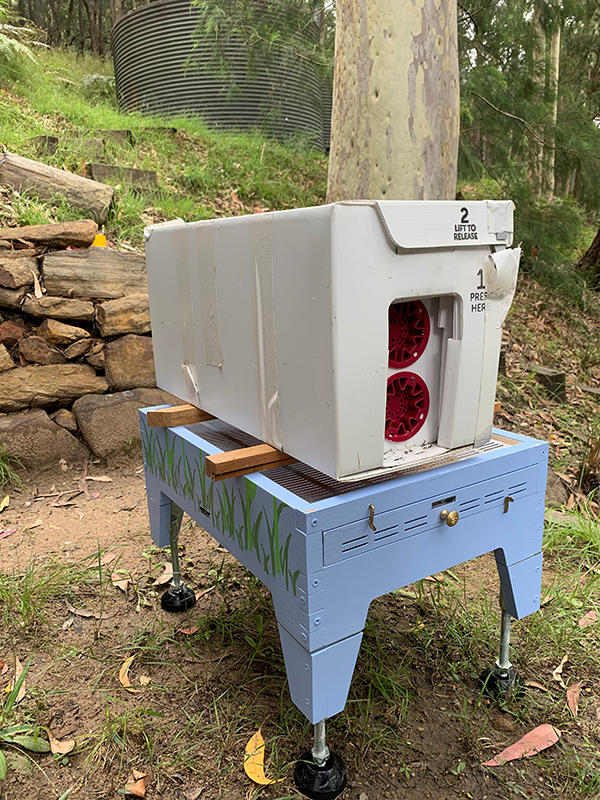
The newly arrived nuc, resting from its journey
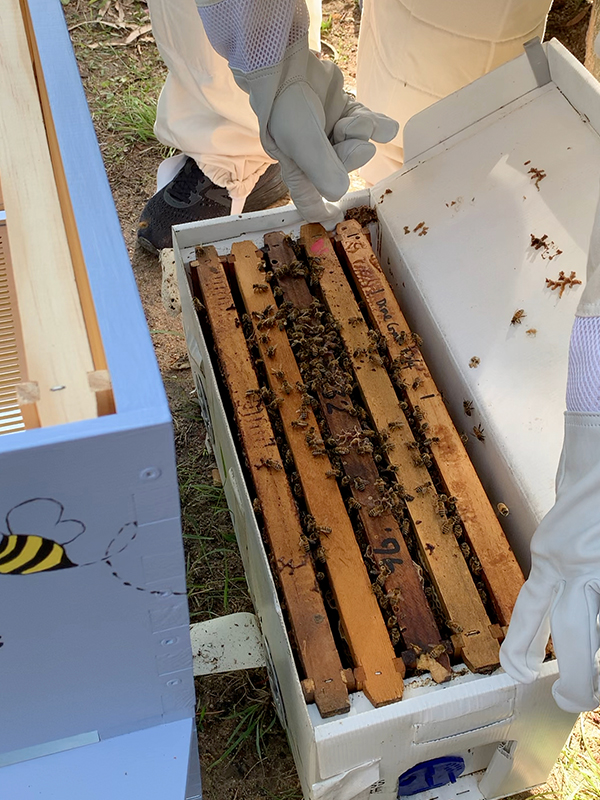
Opening the nuc box
Then it was time for them to reorientate and pollinate. So far the signs are very good, as is the temperament of the bees. Mark at Pittwater Bees assured me that he raises very calm queens, which in turn rule over very calm hives. Given that I am actually allergic to bees, this was an important consideration and I’m delighted to report they are indeed very laid back bees.
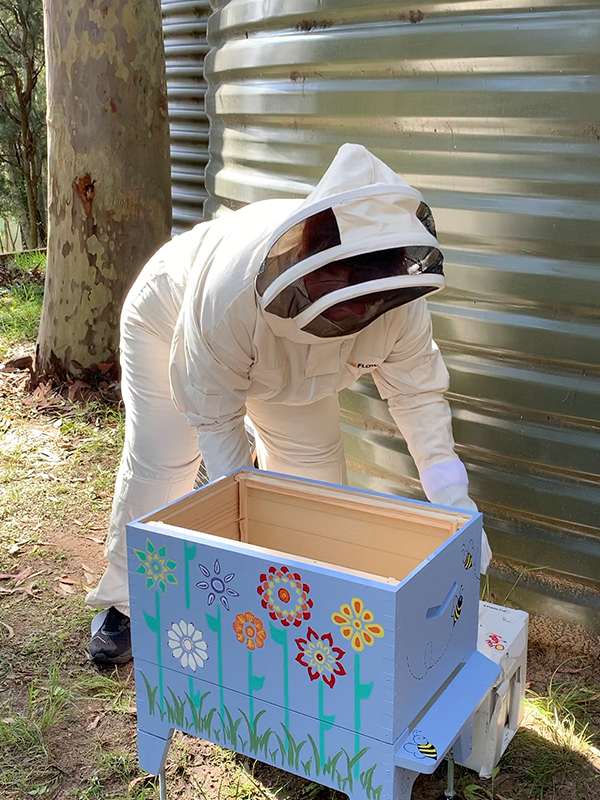
Transferring from the nuc to the brood box
Bees have a highly complex and social existence. A healthy bee colony will contain a queen which, having been fertilised by male drone bees, lays thousands of eggs into the hexagonal wax honeycombs built and tended by all-female worker bees. Young worker bees, known as nurse bees, clean the hive and feed royal jelly to the larvae, which eventually hatch as new worker bees.
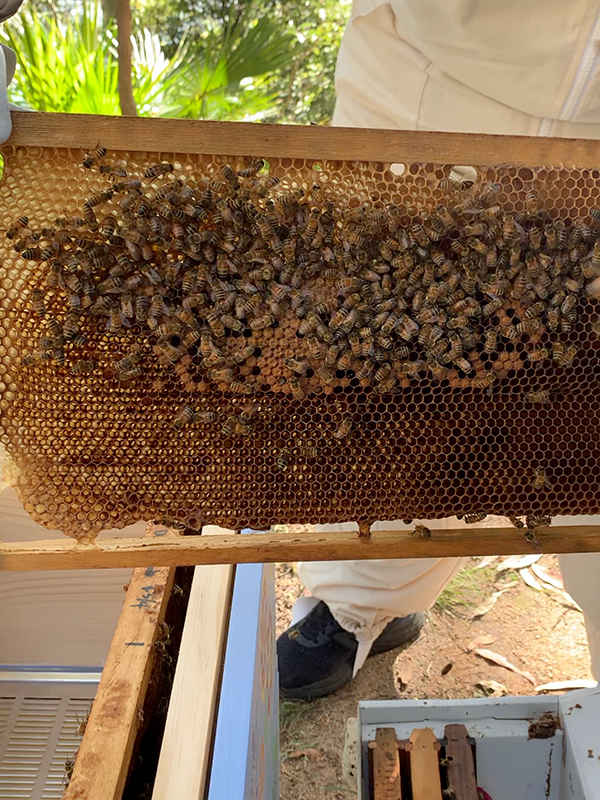
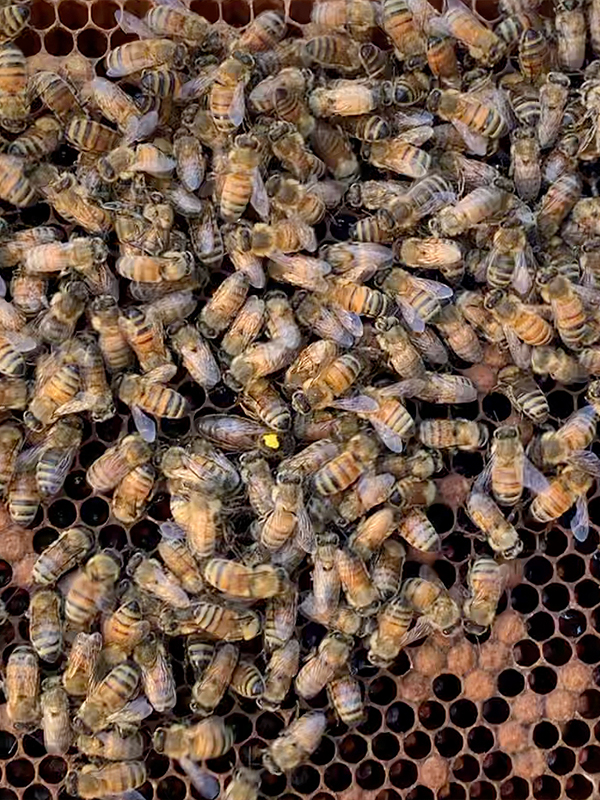
The Queen bee, marked with yellow for easy identification
Worker bees often communicate through dance, passing on information about foraging with a waggle dance and checking on the pollen-laden co-workers returning to the hive with a tremble dance.
As you might expect, life is better for a queen than a worker or a drone. Queen bees live three to five years compared with the female workers, whose lifespan can be measured in weeks in the summer and a handful of months in the winter. While the female workers keep the hive humming, the male drones have only one job – to fertilize the queen. Having done their duty, they have minutes left to live.
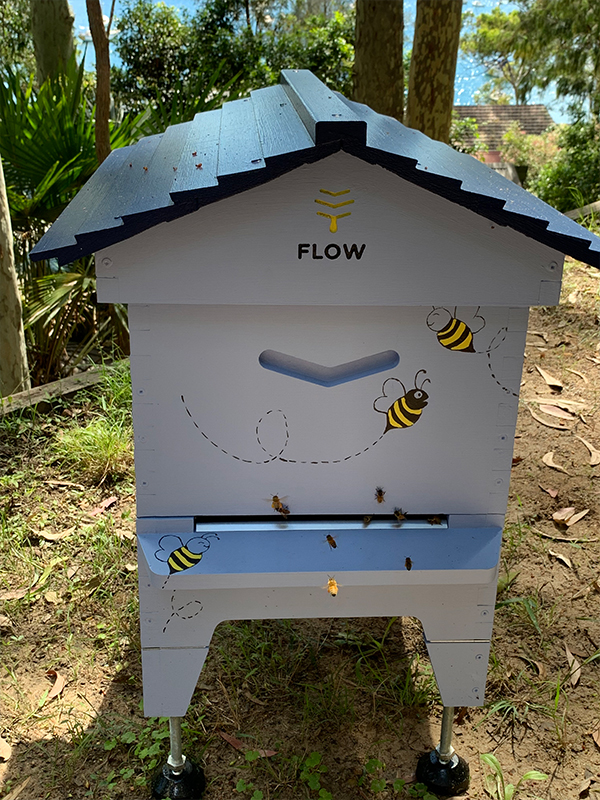
The flow hive getting busy
The complexity of bee life cannot be done justice in one short story, but if you want to learn more, I have set up an Instagram page – https://www.instagram.com/lovett_bay_bees/– to share my beekeeping journey and you can find Pittwater Bees at https://www.instagram.com/pittwaterbees/
